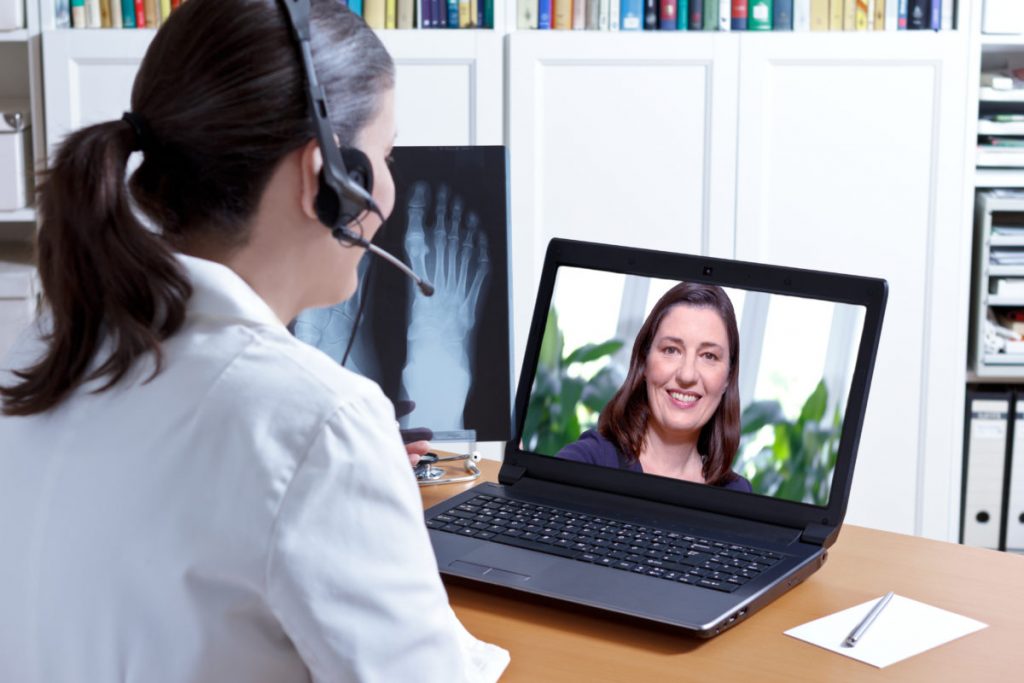Telehealth has been slowly settling into the norm, and we are at a point where there is no turning back. Seventy percent of healthcare organizations are offering some form of telehealth and 77 percent of consumers would consider seeing a provider virtually. Secretary of Health and Human Services Alex Azar is offering his support and Congress has even managed to pass bipartisan legislation. So, what exactly is telehealth and what do we do now that it is here to stay?
Telehealth, Technology & Time
Telehealth is defined as a “broad variety of technologies and tactics to deliver virtual medical, health, and education services,” according to the Center for Connected Health Policy. In the simplest terms, telehealth is a way for providers to leverage digital technologies to connect with their patients in a way that is convenient for both parties. The most common way we think about telehealth is using videoconference technology to connect face to face with a patient in real-time over the internet. At Privia, we call these virtual visits.
The American public got their first chance to make a video telephone call on Bell’s Mod I Picturephone in 1964 during the World’s Fair in New York. Fifty years later, through engineers and visionaries, like Steve Jobs, that technology now fits into the palm of your hand. Today, more than 50 million people a day see, hear, and speak with each other in real time over the internet, using videoconferencing software to instantly create a connection with another person. It has taken a little longer, but this technology is now being used as a way to deliver healthcare, as patients’ demands are changing.
Healthcare Consumers
In 2014, a survey conducted by PricewaterhouseCoopers found that a patient population was displeased with its existing healthcare experience and willing to seek healthcare services from less traditional sources. Even if patients were pleased with the cost and quality of their care (63%), a much smaller percentage (49%) were satisfied with the consumer experience. Dissatisfaction, as it does in all markets, leaves consumers willing to look elsewhere. A third of consumers surveyed (33%) reported that they would trust Google or Amazon to deliver their healthcare, even though they are not traditional healthcare providers, simply for the chance of an improved experience.
Deloitte’s 2016 Consumer Priorities in Health Care Survey helps to explain patient interest. The survey identified the four things that matter most to health care consumers (in order of priority):
- Personalization expected via providers
- Economically rational coverage and care choices
- Convenience driven access and use of care
- Digitally connected to manage health care
If you take away the healthcare context, all of these patient demands are core strengths of today’s major technology companies. Data-driven personalized service, competitive unambiguous pricing with an abundance of choice, an intense focus on convenience and a mobile app for everything. Companies are delivering on these core demands in every other aspect of patients’ lives and naturally, patients are seeking to close the loop.
They want efficient, convenient, technology-enabled healthcare, but technology means nothing without a provider they know and trust.
Telehealth as an Answer
Telehealth is becoming a popular method for enabling the access that patients need. Payers are also engaging in tools with 96 percent of large employer plans offering access to a telehealth benefit.
Many providers have taken a wait and see approach and for good reason. Historically there was a lack of a sustainable fee-for-service revenue model in offering telehealth and state guidelines have varied. The technology, despite its age, has had room to improve and all of these factors are beginning to turn the corner:
- Most states have adopted parity laws nudging commercial insurers toward full coverage of telehealth services. There are also some positive indications Medicare coverage is coming with the passage of portions of the Chronic Care Act.
- Texas, one of the last holdouts, now enables the establishment of a patient-provider relationship virtually along with all other states. Many of the state parity laws not only improve reimbursement but also ease some of the restrictions around patient care.
- Smartphones, tablets, and high-speed internet continue to proliferate. Seventy seven percent of American consumers now own a smartphone and more than three quarters have access to broadband internet.
Where to Start
As you start exploring whether telehealth is right for your practice, it is important to ask the right questions. Here are a few key areas to keep top of mind:
- Technology – Does the technology work and how does it fit into your current workflow? Is it integrated with the EHR you use every day? Does it give you the flexibility to schedule on your terms and functionality to make it easy to transition from an in-person to a virtual visit?
- Revenue – Is there a sustainable revenue model given the current payers in your practice? Do you have the right fee-for-service contracts or capitated deals that allow for reimbursement? Remember, while commercial insurers are increasingly accepting, it’s important to understand the payers in your specific geography.
- Workflow – How does offering virtual visits impact the totality of your practice workflow? Can all of the members of your team (MA, Nurse, Front Desk, etc.) embrace the change? How do you get all team members aligned and educated? How do you communicate which types of patients you would like to see?
- Patients – Your patients likely have a long-standing expectation that they have to drive to their doctor’s office. How do you re-educate your patients on what is best suited for a virtual visit? How do you set the right expectations surrounding the technology?
Our team is thinking deeply about these issues and hammering out all the details that go into the development of a successful telehealth platform for Privia. Privia’s physicians have led, and continue to lead that development process. We believe the easier we make the technology for Privia doctors, the more they can focus on what truly matters — the connection with their patients.
Sources: http://www.cchpca.org/about-telehealth, https://www2.deloitte.com/us/en/pages/life-sciences-and-health-care/articles/healthcare-consumer-experience-survey.html?id=us:2em:3na:hcc:awa:chs:021417, http://www.healthcareitnews.com/news/almost-all-large-employers-plan-offer-telehealth-2018-will-employees-use-it
















really awesome post